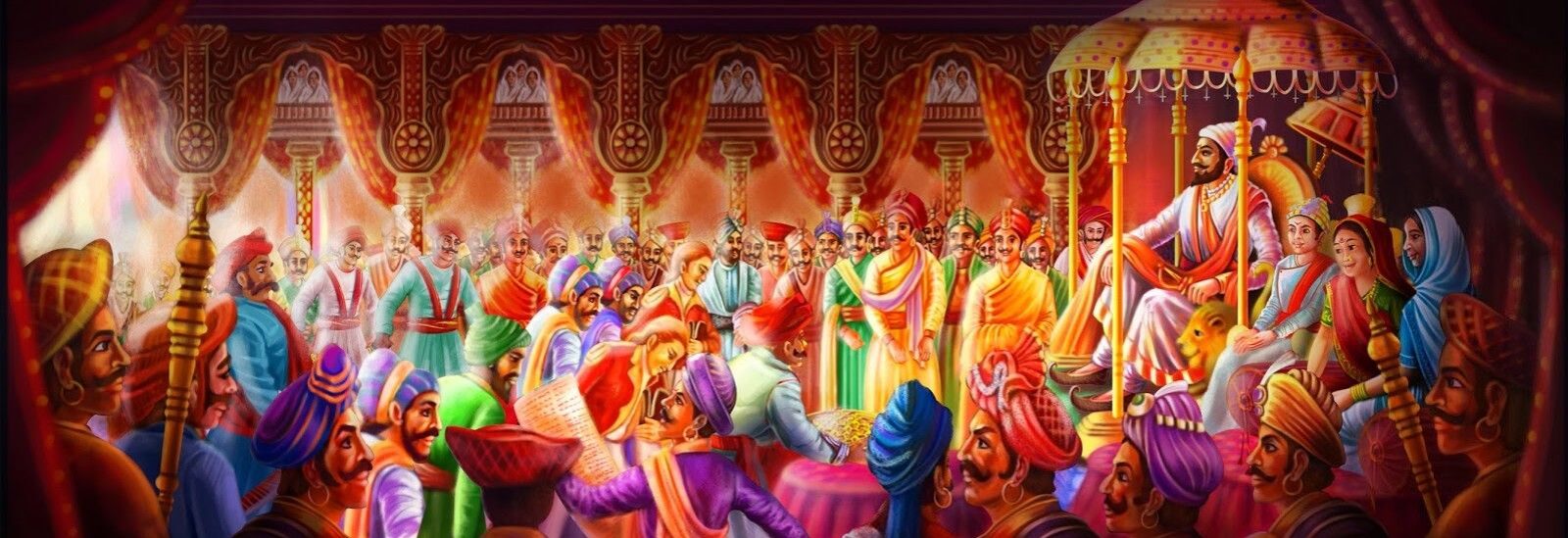Continue reading from Part VIII
The boundaries of the villages were determined. Determined the area of land owned by the farmer. During Shiva period, ‘Shivashahi Kathi’ was used to measure the land. This stick should be about five hands and five fists long and the hand should be 14 tasu (तसू) or 25 fingers i.e. 18 inches. Thus a stick of 82 tasu (तसू) length and a square foot of twenty sticks is one bigha (बिघा) or we can calculate that 20 sticks equals 1 pand (पांड) and 20 pands (पांड) equals 1 bigha (बिघा). Also one hundred and twenty bighas (बिघा) is one chavar (चावर). But in some places this stick is found to be 84 tasu (तसू). Such measurement method was called ‘Bighavani’ (बिघावणी), ‘Chavarana’ (चावराणा) or ‘Chakbandi’ (चकबंदी). Since the bigha (बिघा) was used for revenue assessment, revenue assessment was also called ‘bigoti’ (बिगोटी) or ‘bighoti’ (बिघोटी). During the Maharaj’s reign, the revenue was assessed three times.
Dadaji Konddev counted the revenue during Chhatrapati’s childhood. He designed the land revenue according to the principle of Malik Ambar. He brought many lands under cultivation and increased the land revenue by making suitable reforms in the zamindari system. He also introduced Ryotwari system in Swaraj.
Later, Moropant Pingle improved the revenue calculation and tried to make the revenue system people-oriented. Tax-free lands were donated by them for setting up markets.
Annaji Datto also tried to bring uniformity in land revenue by enumeration of land. He fixed the tax at 33 percent of the total income.
But Shivaji Maharaj changed it to 40 percent. Although the Maharaj increased the percentage of taxes, he in return abolished all other taxes as well as higher taxes. The Maharaj had ordered that the farmer should keep three shares of his total income and deposit two shares with the government. Such government shares were known as ‘Rajbhag’. The Maharaj had ordered the concerned officials that ‘the government should provide money to the new citizens for buying cattle and for buying seeds and after two to four years they should recover it according to their ability’. After checking the crops of 1-2 villages in each mahal of the district for three consecutive years, Maharaj fixed the tax for each type of district on the basis of that information. It should also be taken half in the form of grain and half in a fixed amount that too at a discounted rate.
or goto Part I, Part II, Part III, Part IV, Part V, Part VI, Part VII, Part XI, Part XII, Part XIII, Part XIV, Part XV, Part XVI, Part XVII, Part XVIII


Pingback: Revenue System (Part X- Types of Land Ownership) – Chatrappati Blogging